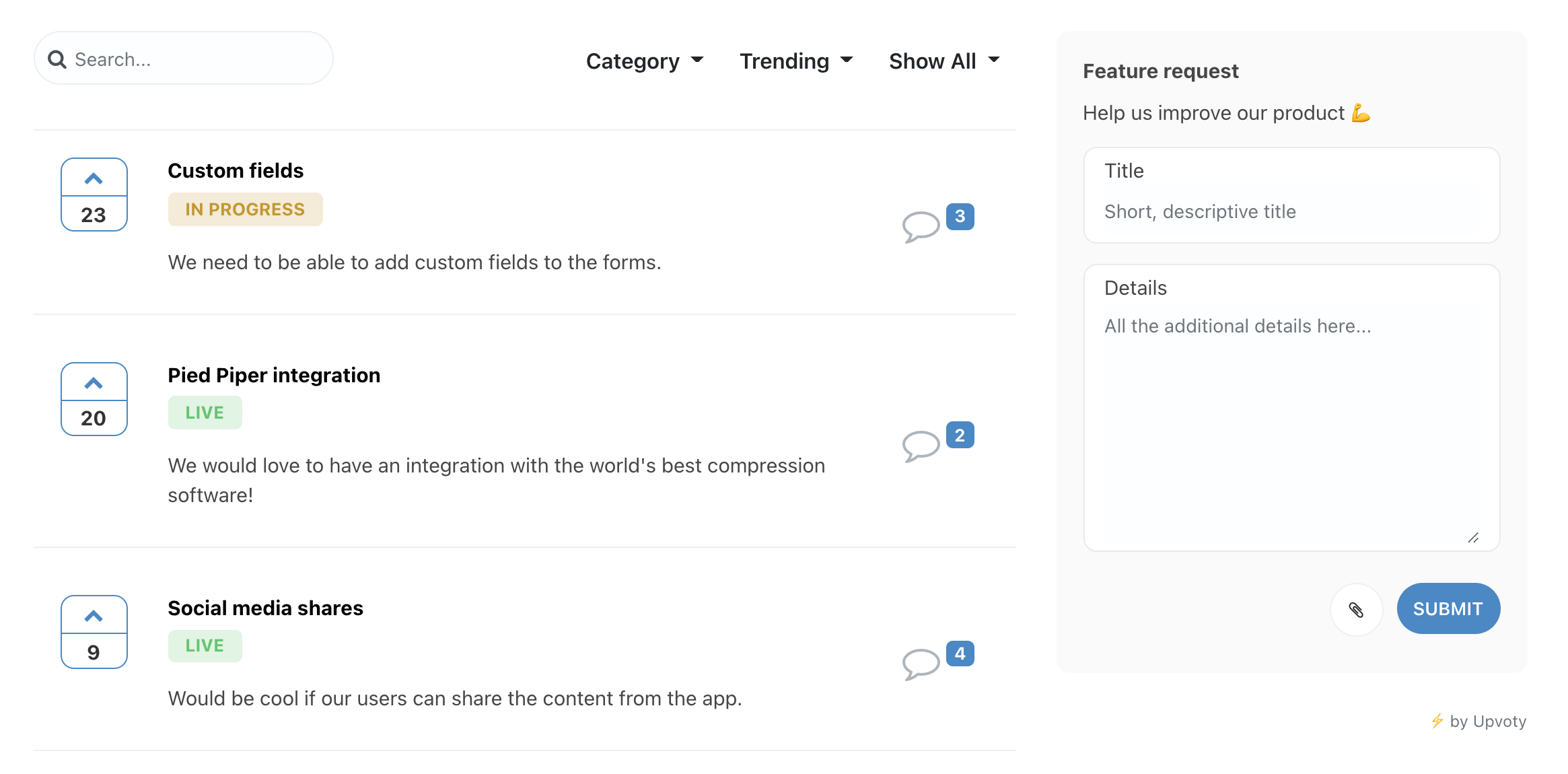How to handle customer feedback
When you launch a new product or feature, you’ll receive feedback from new and existing users almost instantly. This is good because it gives you the opportunity to learn from the people who actually use your product. However, there's a big difference between who is providing feedback, which means you shouldn't automatically agree to all requests. If you do, it could cost you.
Identify feedback
When you receive a new feedback request, for example on the Upvoty feedback boards, it's important to identify the following:- Who is giving feedback?- Is it a free customer or a paying customer?- Does the feedback align with your strategy?- Do more people have the same feedback?Answering these questions can help you formulate your response. Is this feedback valuable to you, to your product, and to other users?
Who is giving feedback?
The feedback you receive from an accountant may be different from the feedback you receive from a web designer. Everyone has different companies, which means they use your product slightly differently. The methods they use to run their business may differ considerably. If you receive feedback from an accountant, the first step is to determine whether this type of customer reflects your overall user base. If the majority of your customers operate in online sectors (web developers, web designers, marketers, etc.), the accountant's feedback may be based on a method that your other customers don't use or support.
Is it a free customer or a paying customer?
 Make a distinction between free customers and paying customers. Who is really asking for these features? Products like Upvoty will make this clear for you by counting and collecting voters for a particular feature. This matters, because free customers tend to demand more and more because they aren't paying for it. As a result, they're more likely to request more features than paying members. On the other hand, paying customers tend to be more solution-oriented, given that they're spending good money on your product.
Make a distinction between free customers and paying customers. Who is really asking for these features? Products like Upvoty will make this clear for you by counting and collecting voters for a particular feature. This matters, because free customers tend to demand more and more because they aren't paying for it. As a result, they're more likely to request more features than paying members. On the other hand, paying customers tend to be more solution-oriented, given that they're spending good money on your product.
Does the feedback align with your strategy?
You should have a pretty clear vision of how you want your product to develop. Some of the feedback you receive may not align with this vision. So what do you do? Our advice is to stick to your own vision and strategy! All feedback is worth considering, but if it doesn't help you achieve your product goals, ignore it. If you take it to heart, your product could lose the identity you worked so hard to create.
Do more people have the same feedback?
Never make changes based on feedback from a single user. If you think a suggestion has the potential to improve your product, ask ✋ for more opinions. Talk to colleagues, customers, and potential customers, or initiate a one-on-one discussion with the person who submitted the feedback. Feedback always stems from an underlying 'problem'. Your customer may be just as satisfied with a workaround. A good way to monitor feedback is with the Upvoty feedback boards and the feature voting option. A Upvoty board allows you to manage all feedback in a single overview and prompts other users to upvote their favorite feedback. The more votes you get, the more confident you'll be about the new product feature and the more people you'll satisfy when you actually build and launch it!
A good way to monitor feedback is with the Upvoty feedback boards and the feature voting option. A Upvoty board allows you to manage all feedback in a single overview and prompts other users to upvote their favorite feedback. The more votes you get, the more confident you'll be about the new product feature and the more people you'll satisfy when you actually build and launch it!
Big benefits of collecting user feedback
- Prevents churn (customer will wait until you released the new features they're asking for)
- You'll always build your product the right way
- Your customers feel engaged
- You know what to prioritize internally
Try it yourself, sign up for a 14-day free trial at Upvoty.

